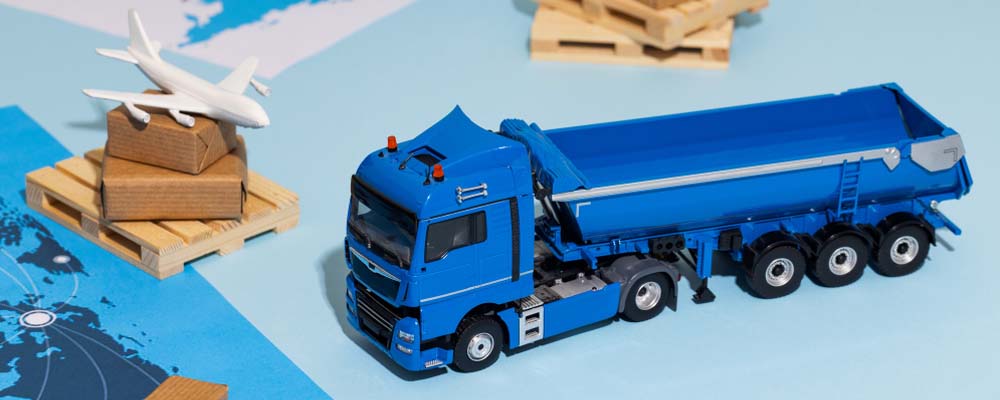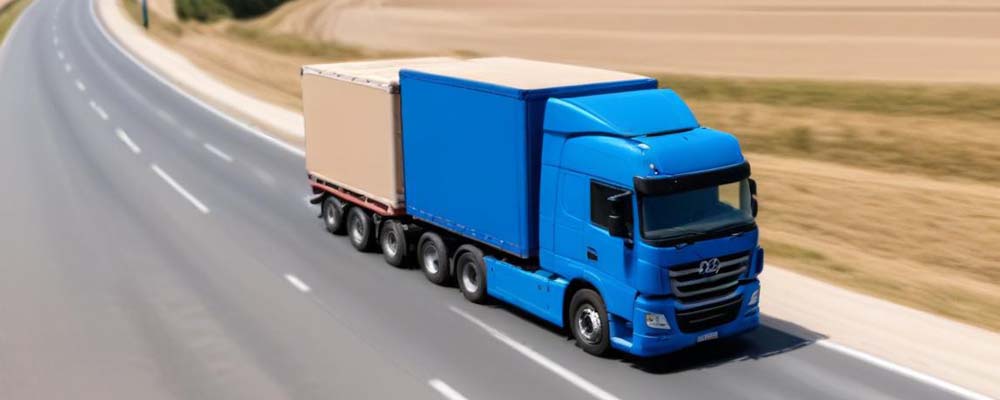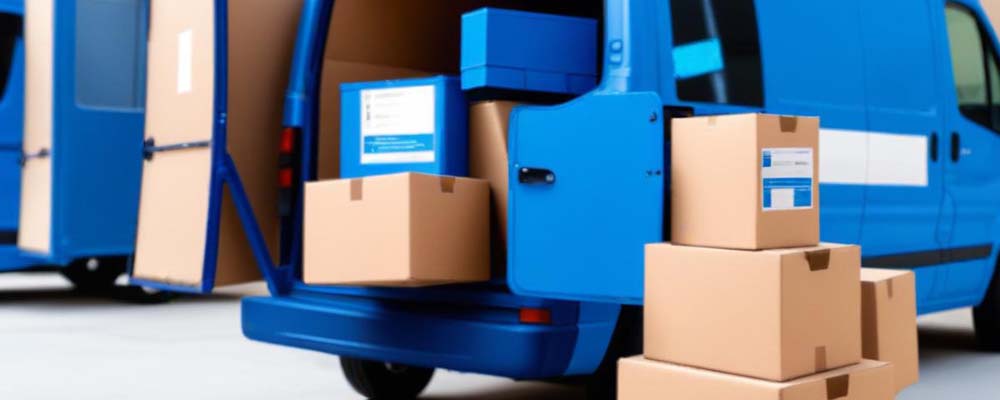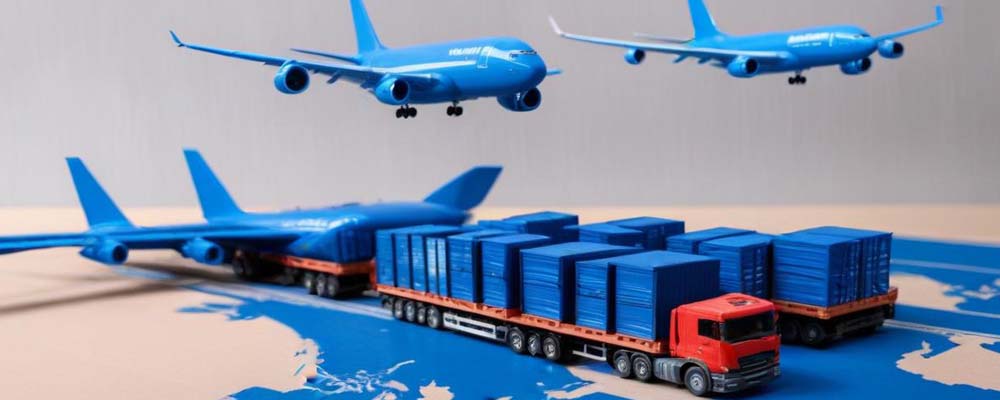
Imagine a world where goods don’t move efficiently across borders. Business would stall, consumers would be frustrated, and economies would grind to a halt. This is why freight forwarding is so crucial. Freight forwarders use various modes of transportation to ensure products reach their destinations safely and on time. In this blog, we will explore the most common transportation modes used by freight forwarders, shedding light on their advantages, challenges, and how they fit into the larger logistics puzzle.
Air Freight
Speed and Efficiency
Air freight is the quickest transportation method available. It is ideal for time-sensitive shipments, such as perishable goods or emergency supplies. Air freight services can deliver packages within 24 to 48 hours, providing a critical advantage in today’s fast-paced world.
Cost Considerations
While air freight is quick, it is also one of the most expensive options. The high cost is due to fuel prices, airport fees, and the specialized handling required for air cargo. However, for high-value or urgent shipments, the speed and reliability often justify the expense.
Global Reach
Air freight has a vast global network, connecting almost every corner of the world. Major carriers like FedEx, UPS, and DHL have extensive logistics networks that can handle complex shipping needs, making air freight a go-to option for international shipments.
Sea Freight
Economical Choice
Sea freight is the most economical mode of transportation for large and heavy shipments. Cargo ships can carry thousands of containers at once, significantly reducing the cost per unit. This makes sea freight ideal for bulk shipments and large-scale import and export activities.
Environmental Impact
Sea freight is considerably more eco-friendly compared to air freight. Ships emit less CO2 per ton of cargo transported, making it a greener option for environmentally conscious businesses.
Transit Time
The primary downside of sea freight is its slower transit time. Shipping goods by sea can take weeks, depending on the distance and route. However, for non-urgent shipments, the cost savings and lower environmental impact make it an attractive option.
Rail Freight
Cost-Effective and Reliable
Rail freight offers a cost-effective and reliable way to transport goods over land. It is particularly useful for moving bulk commodities like coal, steel, and agricultural products. Rail networks are less susceptible to traffic delays and can provide faster transit times than road freight for long distances.
Infrastructure Limitations
One limitation of rail freight is the need for extensive infrastructure. Not all regions have well-developed rail networks, which can limit its applicability. However, in countries with robust rail systems, it is an efficient and dependable mode of transport.
Environmental Benefits
Rail freight is also an environmentally friendly option. Trains consume less fuel per ton-mile compared to trucks, resulting in lower greenhouse gas emissions. This makes rail freight a preferred choice for companies looking to reduce their carbon footprint.
Road Freight
Flexibility and Accessibility
Road freight offers unparalleled flexibility and accessibility. Trucks can reach locations that are inaccessible by rail or air, making it an essential component of last-mile delivery. This mode is particularly beneficial for short to medium distances.
Cost and Efficiency
The cost of road freight varies based on factors like fuel prices, tolls, and driver wages. While generally more expensive than rail freight for long distances, it provides quicker transit times and greater flexibility in routing and scheduling.
Challenges
Road freight faces several challenges, including traffic congestion, road conditions, and regulatory restrictions. Additionally, it is less environmentally friendly compared to rail or sea freight due to higher fuel consumption and emissions.
Intermodal Transportation
Combining Strengths
Intermodal transportation combines multiple modes of transportation, such as rail and road or sea and air, to optimize the shipping process. This approach leverages the strengths of each mode, providing a balance between cost, speed, and environmental impact.
Seamless Coordination
Effective intermodal transportation requires seamless coordination between different carriers and transportation methods. Advanced logistics software and real-time tracking systems are essential to ensure smooth transitions and minimize delays.
Cost and Efficiency
By combining different modes, intermodal transportation can offer cost savings and improved efficiency. For example, using rail for the long haul and trucks for last-mile delivery can reduce costs while maintaining timely deliveries.
Express Courier Services
Speed and Convenience
Express courier services like DHL Express, FedEx, and UPS are designed for fast and convenient deliveries. These services are ideal for small parcels and documents that require quick transit times. With door-to-door delivery options, express couriers provide unmatched convenience.
Cost Implications
The premium speed and convenience of express courier services come at a higher cost. However, for urgent shipments, the additional expense is often justified by the rapid delivery times and reliable service.
Tracking and Security
Express couriers offer advanced tracking capabilities, allowing customers to monitor their shipments in real-time. This added transparency, combined with stringent security measures, ensures that packages are handled with care and reach their destination safely.
Pipeline Transport
Specialized Use
Pipeline transport is a specialized mode used primarily for transporting liquids and gases, such as oil, natural gas, and water. It is an efficient and cost-effective method for moving large volumes of these commodities over long distances.
Environmental Considerations
While pipeline transport has a lower environmental impact compared to road transport, it does pose risks, such as leaks and spills. Proper maintenance and monitoring are crucial to minimize these risks and ensure safe operations.
Infrastructure Investment
Building and maintaining pipelines require significant investment in infrastructure. However, once established, pipelines offer a reliable and low-cost transportation solution for specific industries.
Drayage Services
Short-Haul Transportation
Drayage services involve the short-haul transportation of goods, typically from ports to nearby warehouses or distribution centers. This mode is essential for the initial movement of cargo in intermodal transportation.
Cost and Efficiency
Drayage services are relatively cost-effective for short distances. They play a critical role in the supply chain by facilitating the efficient transfer of goods to longer-haul transportation modes.
Challenges
Drayage services face challenges such as port congestion, limited availability of drivers, and regulatory constraints. Effective coordination and planning are essential to overcome these hurdles and ensure smooth operations.
Conclusion
Understanding the various modes of transportation used by freight forwarders is crucial for optimizing your logistics operations. Each mode offers unique advantages and challenges, making it essential to choose the right combination based on your specific needs. By leveraging the strengths of different transportation methods, you can achieve cost savings, improve efficiency, and reduce your environmental impact.











